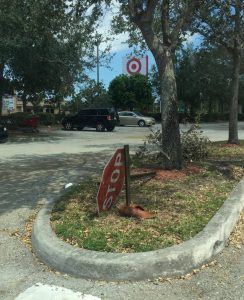 In August 2014, we wrote about the great flooding of Southeast Michigan and our impressions of that time through the lens of marketing. Click here.
In August 2014, we wrote about the great flooding of Southeast Michigan and our impressions of that time through the lens of marketing. Click here.
We got to revisit some of those lessons recently. The lesson occurred a few years down the road, a few hours south on I-75 in the face of Hurricane Irma. One of our writers now lives in Florida. Here are some of her reflections:
- During a potential disaster, business owners perform a critical function helping people prepare for the onslaught: Everybody needed gas, bottled water, batteries and a supply of non-perishable food. Obtaining these took a lot of work (not always successful, by the way), and some businesses really figured out how to help their customers, which in turn, built customer loyalty.
- Communication is key: Publix, a large local grocery chain, posted what supplies they DIDN’T HAVE right at the front entrance and when their next delivery was scheduled. Publix also sent out an email, posted on their doors and told the news media how long they would remain open and gave an absolute closing time of Saturday night at 9:00 p.m.
- Not all companies utilized social media to its full advantage: Franchise owners like fast food restaurants, convenience stores and gas stations often have little social media presence for their specific store and seemed to have no ability to let people know if they were open or not or what supplies they had in their establishments.
- Some businesses communicated less than others: Gas stations were the least nimble of all businesses. Gas lines were interminable. A station with no lines meant that there was no gas left. Very few stations took the time to post a “Out Of Fuel” sign at the entrance. In addition, perhaps because most stations are self serve, no employees came outside to help shepherd people through lines or to ration gas usage; some customers filled tanks and back-up gas cans as well. After the hurricane, the Florida turnpike authority hired people to handle the gas lines at the turnpike rest stops and there were some law enforcement authorities at major intersections throughout Georgia and Florida.
- Emergency staff isn’t always available to help in large numbers: Hotels were completely overwhelmed and understaffed in the cities to which people were escaping. We stayed at 6 hotels in 7 nights in Georgia and they often didn’t update their websites quickly or answer their phones, but they worked hard to accommodate everybody, including a lot of pets and wheelchairs.
- The ability to email and text was very helpful: Businesses that had email or text messaging lists and working email servers were able to let people know when they were closing and reopening. Our gym let us know by email and text when their power was restored and what their hours would be for awhile. Even though this is typically a 24 hour gym, there were still curfews and their staff needed to be able to be home by curfew. We found that being able to return to working out was an integral part of returning to normalcy.
- Community organizations offered respite: Many synagogues, churches and mosques sent emails to their members once their power was restored, letting them know that meals were available or inviting members to get some relief in the air conditioning or to recharge their phones.
Lingering Effects
Even as I write this, it’s not all normal in south Florida. One marketing relevant reflection is that, in addition to the tree detritus that is everywhere, the billboards and shopping center marquees are destroyed. I wonder how long it will take to get the billboard canvases reprinted and re-installed. I also wonder how the cost of that is going to be shared between those who rent billboard space and pay for a certain number of days and those who own the billboards. Businesses, particularly restaurants and food stores, still don’t have their full inventory and it’s going to be a bit longer before anyone can order what they want or get their favorite food, including basics like bread and peanut butter. Traffic lights are not yet completely functional. Neither are street lights. This makes driving take longer and nighttime driving is disconcerting.
For a while, the birds disappeared. I am in love with herons and egrets and they simply weren’t visible anymore. But now they have returned in abundance, especially the elegant long-necked Great Egret. Where did they go during Irma? I didn’t see them at the hotels in Georgia.